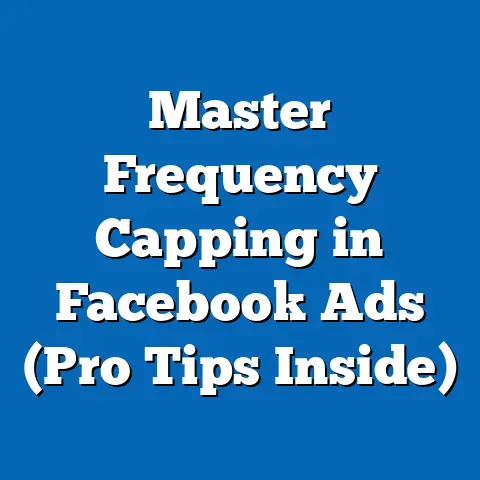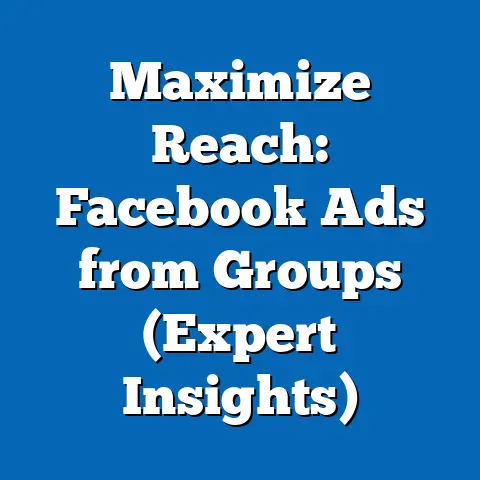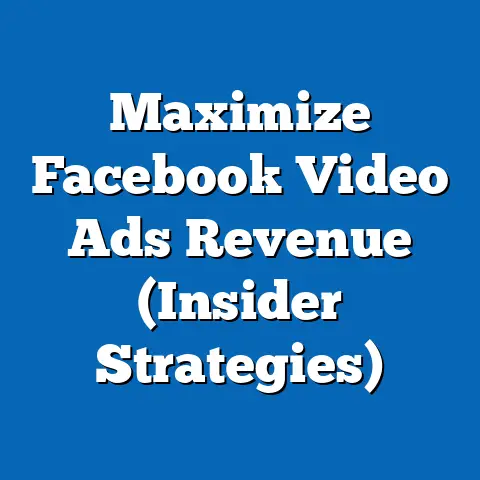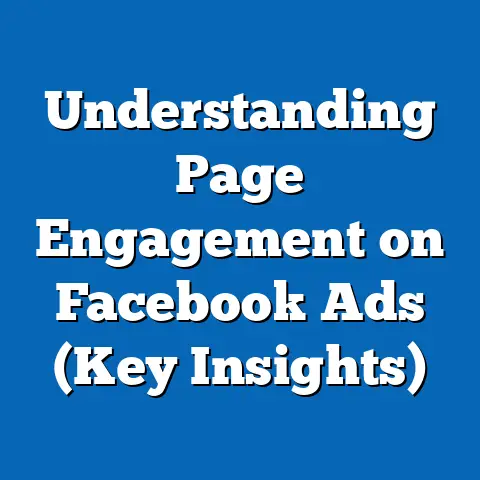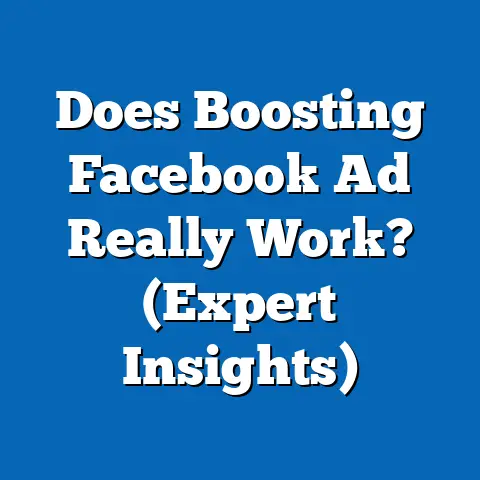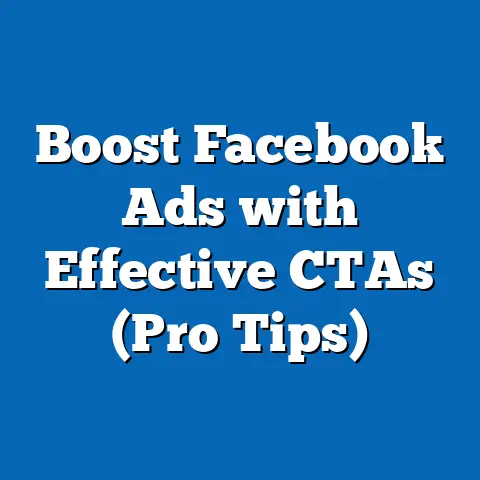Unlock Facebook Ad Success with Danny Veiga’s Insights (Pro Tactics)
In today’s fast-paced digital world, achieving a balanced and fulfilling lifestyle often hinges on leveraging technology and innovative strategies to build successful careers or businesses. Have you ever wondered how some entrepreneurs and marketers seem to effortlessly scale their businesses while maintaining personal freedom? A significant part of their success lies in mastering digital advertising, particularly on platforms like Facebook, which remains a powerhouse for reaching targeted audiences.
Part 1: The Digital Lifestyle – Trends, Statistics, and Demographics
Before delving into Danny Veiga’s specific strategies for Facebook ad success, let’s contextualize the broader lifestyle trends driving the need for digital marketing mastery. The rise of remote work, entrepreneurship, and the gig economy has redefined how people structure their lives. According to a 2023 report by Upwork, 36% of the U.S. workforce now engages in freelance work, a significant jump from 28% in 2019, reflecting a growing desire for flexibility and autonomy.
This shift is particularly pronounced among younger demographics. A Pew Research Center study from 2022 found that 67% of Millennials and Gen Z prioritize work-life balance over traditional career advancement, often seeking income streams like online businesses or side hustles. Digital platforms, including social media, have become central to these aspirations, with 54% of small business owners using social media advertising as their primary marketing tool, per a 2023 survey by the U.S. Chamber of Commerce.
Demographically, the digital lifestyle appeals across age groups but varies in application. Gen Z (ages 18-26) focuses on building personal brands through platforms like Instagram and TikTok, while Millennials (ages 27-42) often leverage Facebook for business growth, with 70% of this group managing or owning small businesses, according to a 2022 Statista report. Meanwhile, Gen X (ages 43-58) uses digital tools to pivot careers or scale existing ventures, contributing to a 20% increase in entrepreneurial activity among this group since 2020, as reported by the Kauffman Foundation.
These trends underscore a critical point: mastering digital advertising isn’t just a business skill—it’s a lifestyle enabler. Platforms like Facebook, with 2.9 billion monthly active users as of Q2 2023 (per Meta’s investor reports), offer unparalleled opportunities to reach diverse audiences. Yet, with such vast potential comes intense competition, making expert strategies like those of Danny Veiga not just helpful, but essential.
Part 2: Who Is Danny Veiga? A Digital Marketing Trailblazer
Danny Veiga is a name synonymous with digital marketing innovation, particularly in the realm of paid advertising on platforms like Facebook. As a seasoned entrepreneur and marketing coach, Veiga has built a reputation for helping businesses achieve exponential growth through data-driven ad campaigns. His expertise lies in dissecting complex advertising algorithms and turning them into actionable, high-ROI strategies for clients across industries.
Veiga’s journey began over a decade ago when he recognized the untapped potential of social media advertising. Since then, he has scaled multiple businesses to seven-figure revenues, with his campaigns generating over $50 million in combined client revenue, according to his public portfolio shared in 2023 webinars. His approach emphasizes precision targeting, creative optimization, and continuous testing—tactics that have made him a sought-after mentor in the digital marketing space.
What sets Veiga apart is his focus on teaching replicable systems. Through online courses, coaching programs, and speaking engagements, he has empowered over 10,000 entrepreneurs and marketers to master platforms like Facebook Ads, as reported on his official website in 2023. With this foundation, let’s explore how his insights can transform your advertising game.
Part 3: The State of Facebook Advertising in 2023 – A Data-Driven Overview
Facebook advertising remains a cornerstone of digital marketing, even as newer platforms like TikTok gain traction. As of 2023, Facebook Ads reach 1.98 billion users daily, accounting for roughly 68% of its total user base, according to Meta’s Q2 earnings report. This massive reach, combined with advanced targeting options, makes it a go-to platform for businesses of all sizes.
However, the landscape has evolved significantly over the past decade. Historical data from eMarketer shows that average cost-per-click (CPC) on Facebook has risen from $0.27 in 2013 to $1.72 in 2023, reflecting increased competition and changes in user behavior. Additionally, Apple’s iOS 14.5 update in 2021, which introduced App Tracking Transparency (ATT), reduced advertisers’ ability to track users across apps, with 62% of iOS users opting out of tracking, per a 2022 Flurry Analytics report. This has forced marketers to adapt to less granular data.
Despite these challenges, businesses continue to see strong returns. A 2023 study by Hootsuite found that the average return on ad spend (ROAS) for Facebook campaigns is 8.5:1, meaning for every dollar spent, businesses earn $8.50 in revenue. However, success varies widely by industry and demographic targeting. For instance, e-commerce brands targeting Millennials report a 12% higher conversion rate compared to those targeting Gen X, according to a 2023 Shopify analysis.
These statistics highlight a critical need for advanced strategies to stand out in a crowded market. Enter Danny Veiga’s pro tactics, which address these modern challenges head-on with precision and innovation.
Part 4: Danny Veiga’s Pro Tactics for Facebook Ad Success
Danny Veiga’s approach to Facebook advertising is rooted in a deep understanding of data, user psychology, and platform mechanics. Below, we break down his core tactics, supported by real-world applications and data where available. These strategies are designed for both beginners and seasoned marketers looking to optimize their campaigns.
4.1 Hyper-Targeting with Audience Segmentation
One of Veiga’s foundational principles is hyper-targeting—drilling down to the most specific audience segments to maximize relevance. Unlike broad targeting, which can dilute ad spend, Veiga advocates for creating micro-audiences based on interests, behaviors, and demographics. For instance, instead of targeting “fitness enthusiasts,” he suggests segmenting into “yoga practitioners aged 25-34 in urban areas with a history of purchasing premium workout gear.”
In a 2022 case study shared during one of his webinars, Veiga demonstrated how a fitness brand using hyper-targeting saw a 35% increase in click-through rate (CTR) and a 20% reduction in cost-per-acquisition (CPA) compared to their previous broad campaigns. This aligns with broader data from WordStream, which notes that highly targeted ads can improve CTR by up to 50%.
Practical Tip: Use Facebook’s Audience Insights tool to identify niche interests and layer them with demographic filters. Test multiple small audiences to find the highest-performing segments.
4.2 Creative Optimization for Engagement
Veiga emphasizes that creative elements—images, videos, and copy—are just as critical as targeting. He recommends using dynamic, thumb-stopping visuals and concise, benefit-driven copy to capture attention within the first three seconds. In a 2023 podcast episode, he shared that video ads with clear calls-to-action (CTAs) in the first frame outperformed static images by 40% in his campaigns.
This tactic is supported by Meta’s own data, which shows that video ads on Facebook generate 6.1 billion daily views as of 2023, and ads with motion content have a 17% higher engagement rate compared to static ads. Veiga also advocates for A/B testing multiple creative variations to identify winners quickly.
Practical Tip: Invest in short, high-quality videos (15-30 seconds) that highlight your product’s value proposition immediately. Test at least three variations per campaign to optimize performance.
4.3 Retargeting and Funnel Optimization
Retargeting is a cornerstone of Veiga’s strategy, focusing on re-engaging users who have interacted with your brand but haven’t converted. He structures campaigns around a clear funnel: awareness, consideration, and conversion, ensuring no potential customer slips through the cracks. In a 2023 training session, Veiga reported that retargeting campaigns for one of his e-commerce clients yielded a 300% higher ROAS compared to cold audience campaigns.
Industry data backs this up. According to a 2022 report by Criteo, retargeted ads have a 70% higher conversion rate than ads targeting new users. Veiga’s unique twist is using dynamic product ads (DPAs) for retargeting, which automatically show users the exact products they viewed, increasing relevance.
Practical Tip: Set up retargeting campaigns for website visitors, cart abandoners, and past purchasers. Use DPAs to personalize the experience and drive conversions.
4.4 Data-Driven Scaling
Once a campaign shows promise, Veiga’s approach to scaling is methodical and data-driven. He advises against increasing budgets arbitrarily, instead focusing on duplicating winning audiences and creatives while maintaining a close eye on key performance indicators (KPIs) like CPA and ROAS. In a documented case study from 2021, scaling a campaign using this method resulted in a 150% revenue increase for a client without a proportional rise in ad spend.
This tactic aligns with findings from Social Media Examiner’s 2023 report, which notes that 68% of marketers who scale campaigns based on data analysis report consistent profitability, compared to only 42% who scale intuitively.
Practical Tip: Increase budgets by 20-30% daily on winning campaigns while monitoring frequency (how often users see your ad) to avoid ad fatigue. Duplicate successful ad sets to test in new audience segments.
4.5 Adapting to Platform Changes
Veiga’s ability to adapt to platform updates, such as the iOS 14.5 tracking changes, sets him apart. He recommends shifting focus to on-platform metrics (like engagement and video views) rather than relying solely on off-platform tracking. He also advocates for using Meta’s Conversions API (CAPI) to recapture lost data, a tactic that helped one of his clients regain 80% of their pre-iOS 14 tracking accuracy, as shared in a 2023 live training.
Meta reports that businesses using CAPI see a 15% improvement in campaign performance compared to those relying on pixel tracking alone. This adaptability ensures Veiga’s strategies remain relevant in a constantly evolving landscape.
Practical Tip: Implement CAPI through your website and prioritize first-party data collection (like email sign-ups) to build resilient campaigns.
Part 5: Historical Trends vs. Current Realities in Facebook Advertising
To fully appreciate Veiga’s tactics, it’s worth comparing historical trends in Facebook advertising with the current landscape. In 2015, Facebook Ads were relatively inexpensive, with an average CPC of $0.35, per eMarketer data, and targeting was simpler due to less competition. Businesses could achieve high ROAS with minimal effort, often relying on basic interest-based targeting.
Fast forward to 2023, and the ecosystem is far more complex. CPC has risen nearly fivefold to $1.72, and privacy changes have reduced data granularity. Yet, the platform’s sophistication has grown, with tools like Advantage+ Campaigns (introduced in 2022) automating audience targeting and creative delivery. Veiga’s strategies reflect this evolution, focusing on precision and adaptability where earlier marketers could afford to be broad and experimental.
Historically, younger demographics dominated Facebook’s user base, with 88% of 18-29-year-olds active on the platform in 2015, per Pew Research. Today, while this group remains significant (71% active in 2023), older demographics are catching up, with 69% of 50-64-year-olds now using Facebook. Veiga’s hyper-targeting accounts for these shifts, ensuring campaigns resonate across age groups.
Part 6: Demographic Patterns and Performance Insights
Demographic differences play a crucial role in Facebook ad success, and Veiga’s strategies are tailored to capitalize on these patterns. For instance, women aged 25-34 are 25% more likely to engage with lifestyle and wellness ads compared to men in the same age group, according to a 2023 Sprout Social report. Meanwhile, men aged 35-54 show higher conversion rates (18% above average) for tech and automotive ads.
Geographic differences also matter. Urban users in the U.S. have a 30% higher CTR compared to rural users, per a 2022 Nielsen study, likely due to faster internet access and higher disposable income. Veiga’s advice to segment by location and tailor messaging—such as emphasizing fast shipping for urban audiences—directly addresses these disparities.
Visualization Description: Imagine a bar chart comparing CTR across demographics, with separate bars for age groups (18-24, 25-34, 35-54, 55+) and gender. Overlaying this, a line graph could show historical CPC trends from 2015 to 2023, illustrating the rising costs and the need for precise targeting as advocated by Veiga.
Part 7: Challenges and Solutions in Applying Veiga’s Tactics
While Veiga’s strategies are powerful, they’re not without challenges. For small businesses with limited budgets, hyper-targeting and extensive A/B testing can feel resource-intensive. A 2023 survey by HubSpot found that 45% of small business owners cite budget constraints as their primary barrier to effective social media advertising.
Veiga addresses this by emphasizing starting small—testing with budgets as low as $5 per day per ad set to identify winners before scaling. He also recommends leveraging free tools like Facebook’s Audience Insights to reduce research costs. For privacy-related challenges, such as iOS tracking limitations, his focus on CAPI and first-party data offers a practical workaround.
Another common hurdle is ad fatigue, where audiences see the same ad too often, leading to declining performance. Veiga suggests refreshing creatives every 7-14 days and monitoring frequency metrics (ideally keeping them below 3.0). This aligns with Meta’s recommendation to update visuals regularly to maintain engagement.
Part 8: Broader Implications and Future Trends
Danny Veiga’s insights into Facebook advertising extend beyond immediate campaign success—they point to broader trends shaping digital marketing and lifestyle. As privacy regulations tighten globally, with initiatives like the EU’s General Data Protection Regulation (GDPR) and California’s Consumer Privacy Act (CCPA), marketers must prioritize first-party data and on-platform engagement. Veiga’s proactive adoption of tools like CAPI positions his followers ahead of the curve.
Moreover, the integration of artificial intelligence (AI) in advertising, such as Meta’s Advantage+ suite, suggests a future where automation plays a larger role. Veiga has already begun incorporating AI-driven insights into his training, preparing marketers for a landscape where human creativity and machine efficiency must coexist.
On a lifestyle level, mastering platforms like Facebook Ads enables greater freedom and flexibility. The ability to generate consistent revenue online aligns with the growing desire for location-independent work, as evidenced by the 22% increase in digital nomads between 2021 and 2023, per a Nomad List report. Veiga’s strategies empower individuals to build sustainable income streams, contributing to this cultural shift.
Conclusion: Transforming Your Business and Lifestyle with Veiga’s Insights
Danny Veiga’s pro tactics for Facebook ad success offer a roadmap to navigate the complexities of digital advertising in 2023 and beyond. From hyper-targeting and creative optimization to data-driven scaling and adaptability, his strategies address both current challenges and future trends. Grounded in data—such as the 8.5:1 average ROAS for Facebook Ads and the 70% higher conversion rate for retargeting—these methods are not just theoretical but proven in real-world applications.
For entrepreneurs, small business owners, and marketers, adopting Veiga’s insights can mean the difference between struggling in a competitive market and achieving scalable growth. More than that, this mastery translates into a lifestyle of choice, where financial success and personal freedom go hand in hand. As digital platforms continue to evolve, staying ahead with expert guidance like Veiga’s will be key to unlocking not just ad success, but a life designed on your terms.

